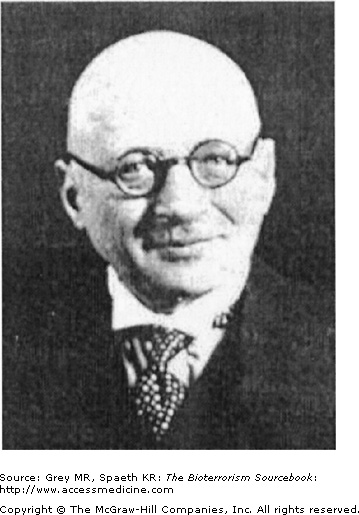A Brief History of Chemical Weapons: Introduction
The crude use of chemical weapons is documented in written and visual form as early as 600 BC. That year, the Athenian general Solon contaminated the water supply of the besieged Greek city of Cirrha with black hellebore root. Crippled by severe diarrhea, the Cirrhaeans were defeated. This may have been the first known use of incapacitating agents as chemical weapons. During the Peloponnesian War (420 BC), Spartan forces overran an Athenian stronghold by using irritating fumes created by the burning of sulfur, coals, and tars. Nearly a millennium later, this practice evolved into a common military tactic referred to as “Greek fire,” the formula that has forever been a secret, but is thought to be a precursor to napalm involving burning a mix of sulfur, resin, pitch, naphtha, lime, and saltpeter. Greek fire was used in large scale first by the Byzantines in naval wartime. They would place the materials in bronze tubes, ignite the materials, and direct the flame through the tube at enemy fleets.
The great Carthaginian general Hannibal (184 BC) used belladonna plants to induce disorientation in opposing troops during the Punic Wars. In 1672 AD, the Bishop of Muenster used crude grenades filled with belladonna to attack the city of Groningen. In 1881, men conducting a railway survey in North Africa became ill after eating dried dates offered to them by local tribesmen. It turns out that the fruit had been tainted with Hyoscyamus falezlez, a plant containing a scopolamine-like chemical. In 1908, a troop of French Colonial soldiers stationed in Hanoi were poisoned with a phytotoxin that induced hallucinations and acute mental status changes.
Modern Chemical Warfare
The Industrial Revolution included in its momentum a revolution in the development of chemical weapons. Although there had been threats of use during the Civil and Napoleonic Wars, it wasn’t until WWI that chemical weapons were actually utilized. Ironically, a Nobel Prize–winning scientist, Fritz Haber, is largely responsibility for their development and implementation (Fig. 22–2). The irony lays within Haber’s having won a Nobel Prize for discovering a process for extracting nitrogen out of air. This discovery led to the industrial production of fertilizer, which allowed Western agricultural output to increase immensely, resulting in an abundance of food for a hungry world. Many view this as one of the most valuable discoveries in human history.
Haber, who considered himself a great German patriot, knew that the war was at a stalemate. He knew, also, that the German military had already failed twice in attempts to use bromide against the French. Haber proposed the use of chlorine gas, and development was immediately begun. On April 22, 1915, Fritz Haber stood on the Western front, at Ypres, Belgium, facing British and Canadian troops. When he felt wind conditions were at their best, he ordered the gas to be released (Fig. 22–3). Based on the “success,” the German army then asked him to lead a similar assault on the Eastern front against the Russian army. The night he left, his wife, also a respected chemist, committed suicide; an act many historians believe was out of disgust at his inhumanity. For his actions, Haber would later earn the distinction of being the only Nobel Prize winner to be accused of war crimes. He was never prosecuted, however within 6 months, the Germans had developed phosgene and by 1917, they had developed mustard gas—a misnomer as it is, more accurately, an aerosol (see Glossary
Stay updated, free articles. Join our Telegram channel

Full access? Get Clinical Tree










